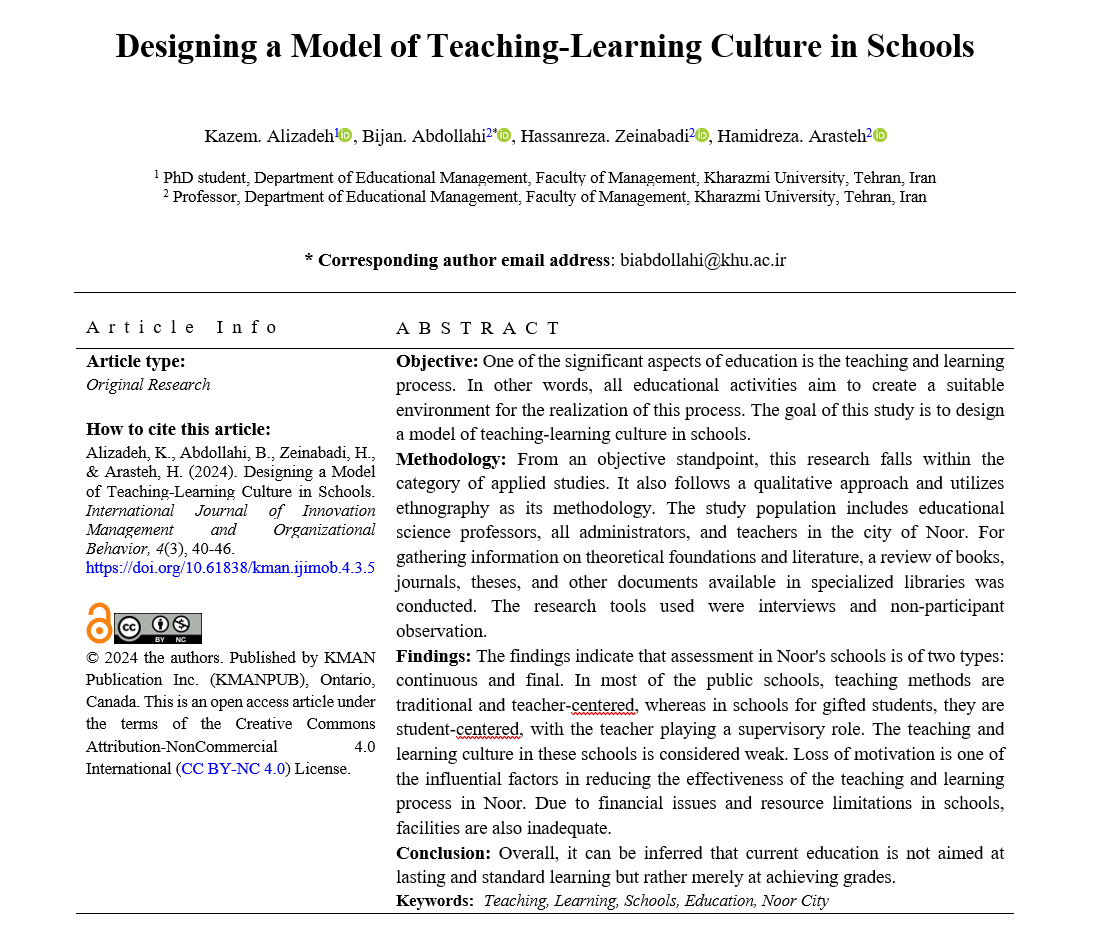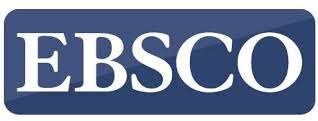Designing a Model of Teaching-Learning Culture in Schools
Keywords:
Teaching, Learning, Schools, Education, Noor CityAbstract
Objective: One of the significant aspects of education is the teaching and learning process. In other words, all educational activities aim to create a suitable environment for the realization of this process. The goal of this study is to design a model of teaching-learning culture in schools.
Methodology: From an objective standpoint, this research falls within the category of applied studies. It also follows a qualitative approach and utilizes ethnography as its methodology. The study population includes educational science professors, all administrators, and teachers in the city of Noor. For gathering information on theoretical foundations and literature, a review of books, journals, theses, and other documents available in specialized libraries was conducted. The research tools used were interviews and non-participant observation.
Findings: The findings indicate that assessment in Noor's schools is of two types: continuous and final. In most of the public schools, teaching methods are traditional and teacher-centered, whereas in schools for gifted students, they are student-centered, with the teacher playing a supervisory role. The teaching and learning culture in these schools is considered weak. Loss of motivation is one of the influential factors in reducing the effectiveness of the teaching and learning process in Noor. Due to financial issues and resource limitations in schools, facilities are also inadequate.
Conclusion: Overall, it can be inferred that current education is not aimed at lasting and standard learning but rather merely at achieving grades.
Downloads

Downloads
Additional Files
Published
Submitted
Revised
Accepted
Issue
Section
License
Copyright (c) 2024 Kazem Alizadeh (Author); Bijan Abdollahi (Corresponding Author); Hassanreza Zeinabadi , Hamidreza Arasteh (Author)

This work is licensed under a Creative Commons Attribution-NonCommercial 4.0 International License.















